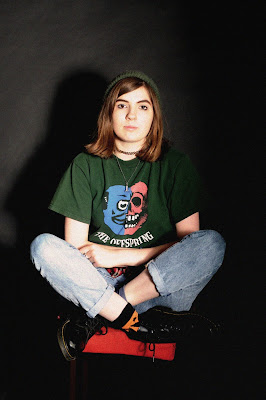I have gained a couple of new technical and aesthetic insights throughout my preparatory shoots. Firstly, I have used a new form of lighting that I had not used independently before - I used a beauty dish in order to direct light onto my model. I am now confident in setting this type of light up and controlling it on my own, whereas before I had only used this a couple of times and always with supervision. Something I learned to do aesthetically was how to make my images look old and grainy through photoshop. I wanted my images to not only represent a style from a particular decade, but also look as though it had come straight out of it. By using the 'add noise' and 'gaussian blur' tools, as well as others depending on the decade, I was able to make my images appear very grainy and gritty. This helped make them seem old, worn and gave the effect that an old camera was used to capture the images.
In my next three exam shoots, I plan to work on the decades 1910, 1950 and 2010 as this will allow me to capture the style from 100 years ago, now and then somewhere in the middle. From my preparatory shoots, I plan on carrying on with using a beauty dish as I really enjoyed the depth and shadows that this added to my images. I also plan on recreating the same editing techniques from these shoots in my exam as I really enjoyed the outcome and I feel they were successful in giving the overall effect that I wanted. From my research, I know exactly the kind of looks I hope to create in my shoots. I plan to shoot in the order of 2010s, 1950s and then 1910s so that, in terms of shoot order, it appears as though the viewer will be going back in time to look at the history of make up and fashion.



















































